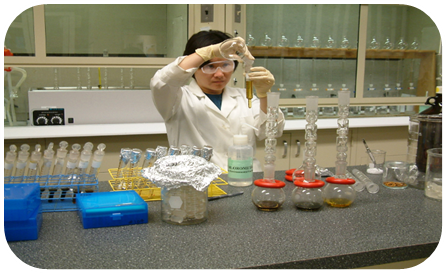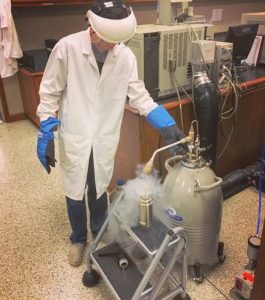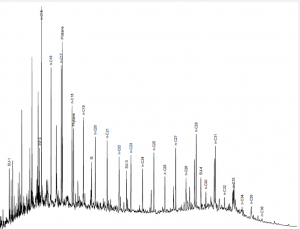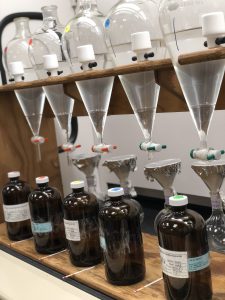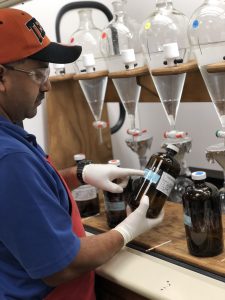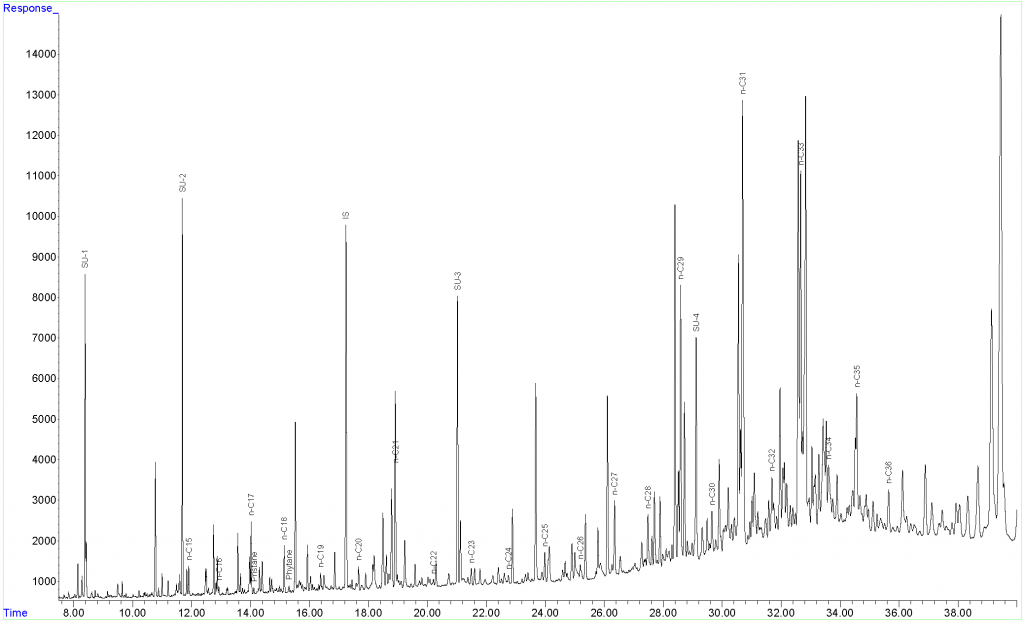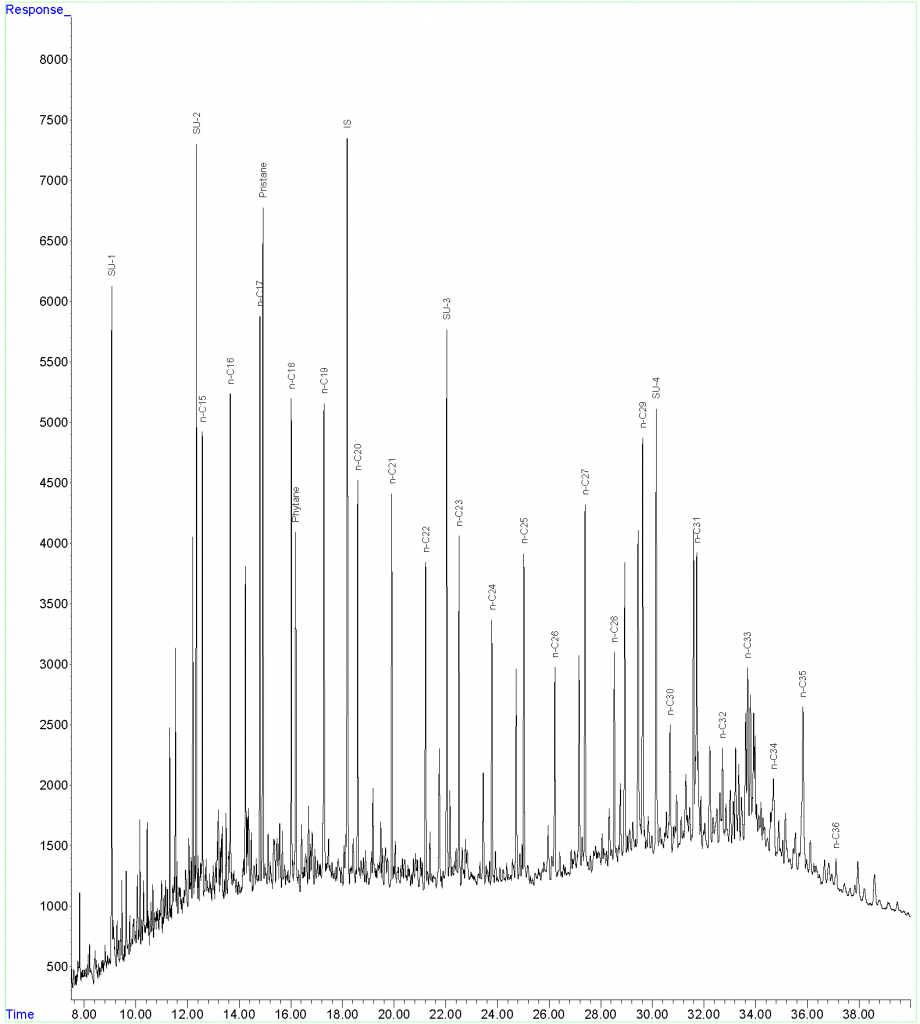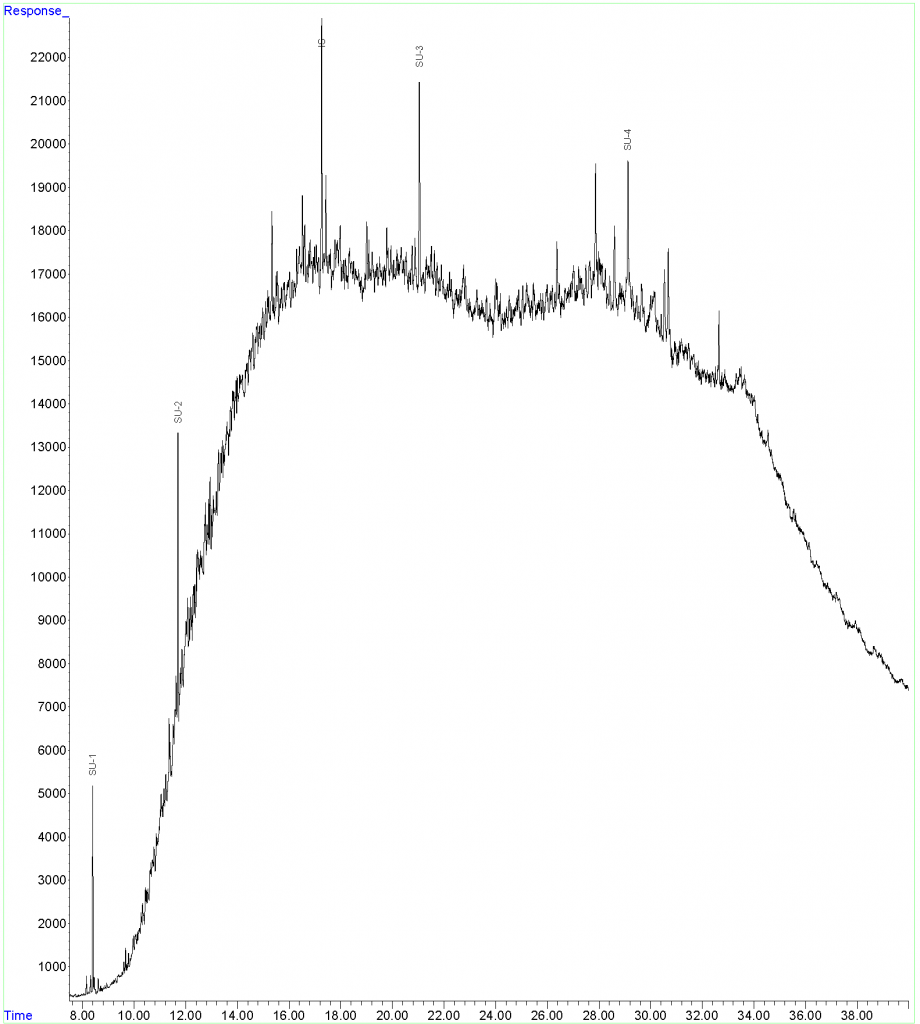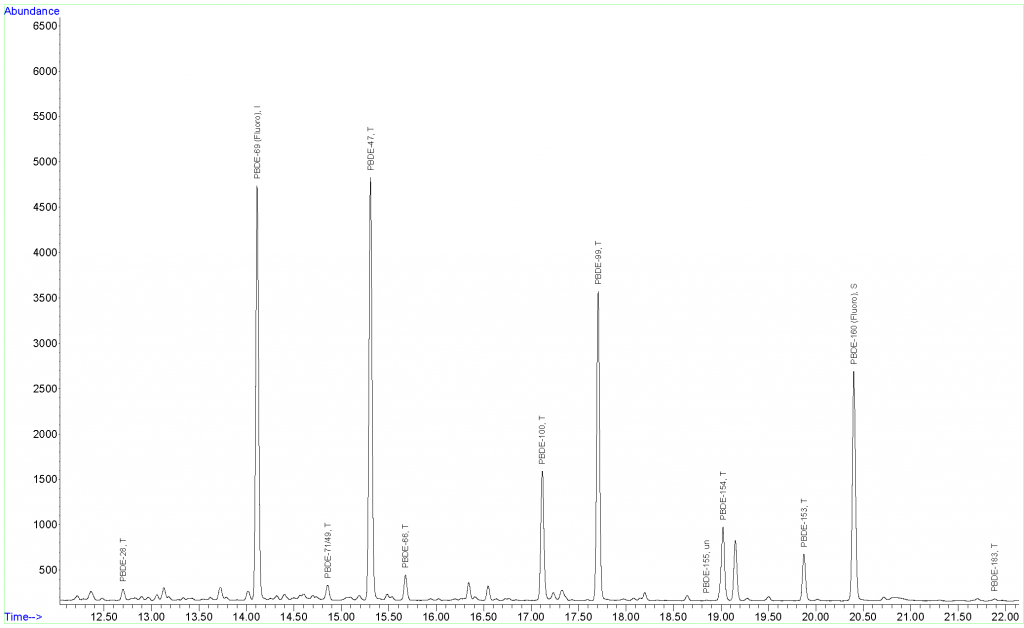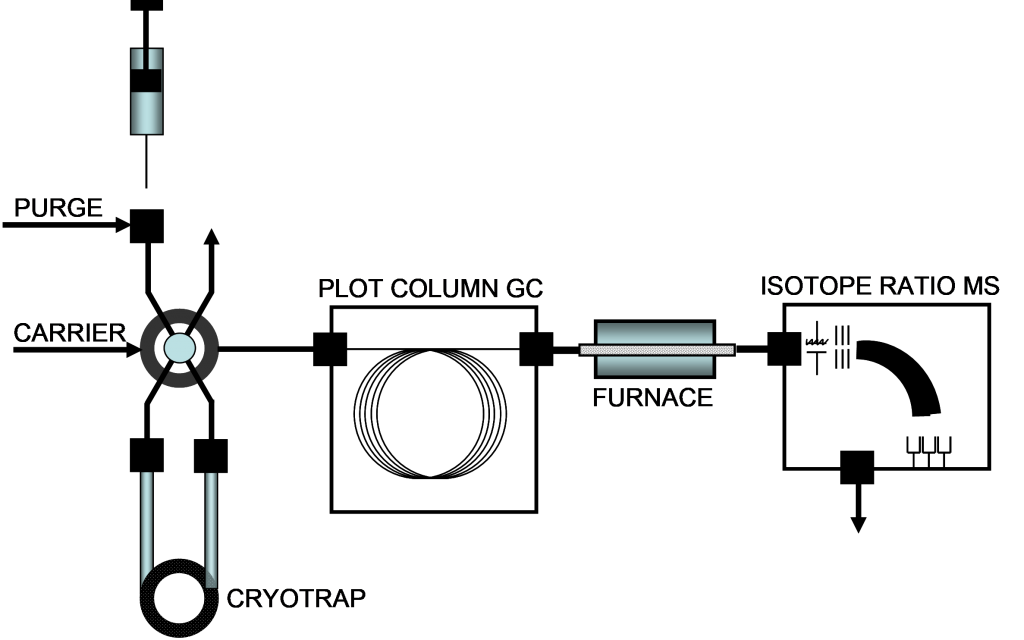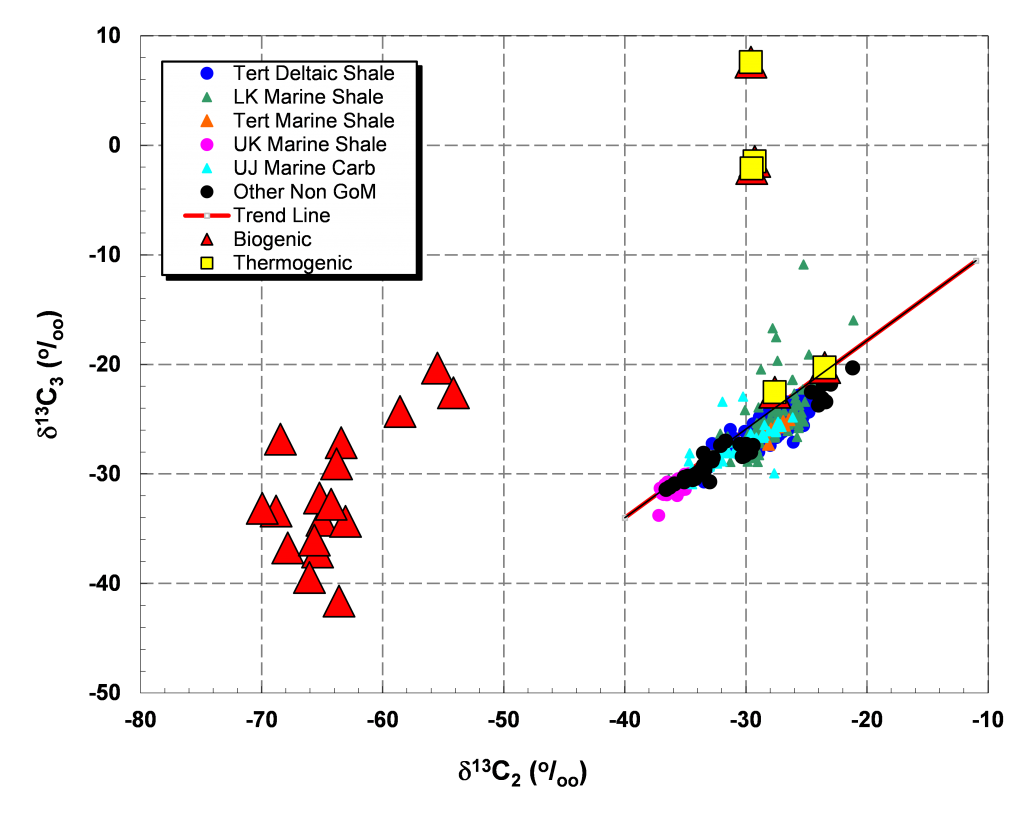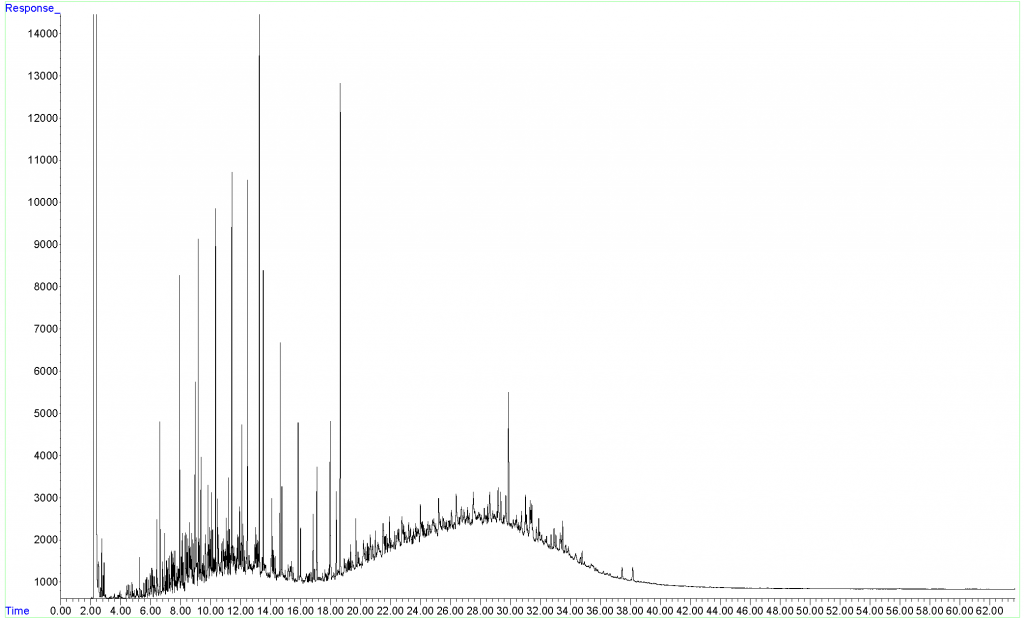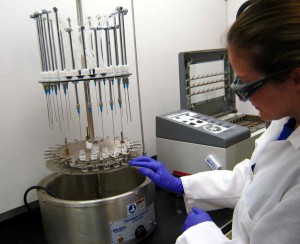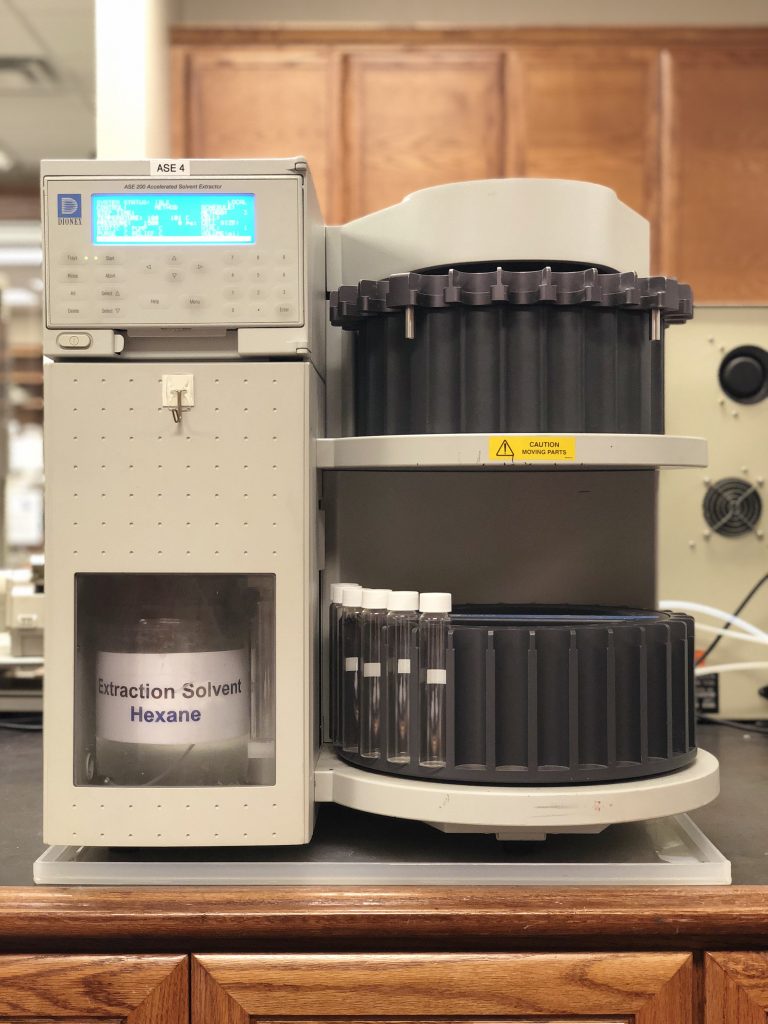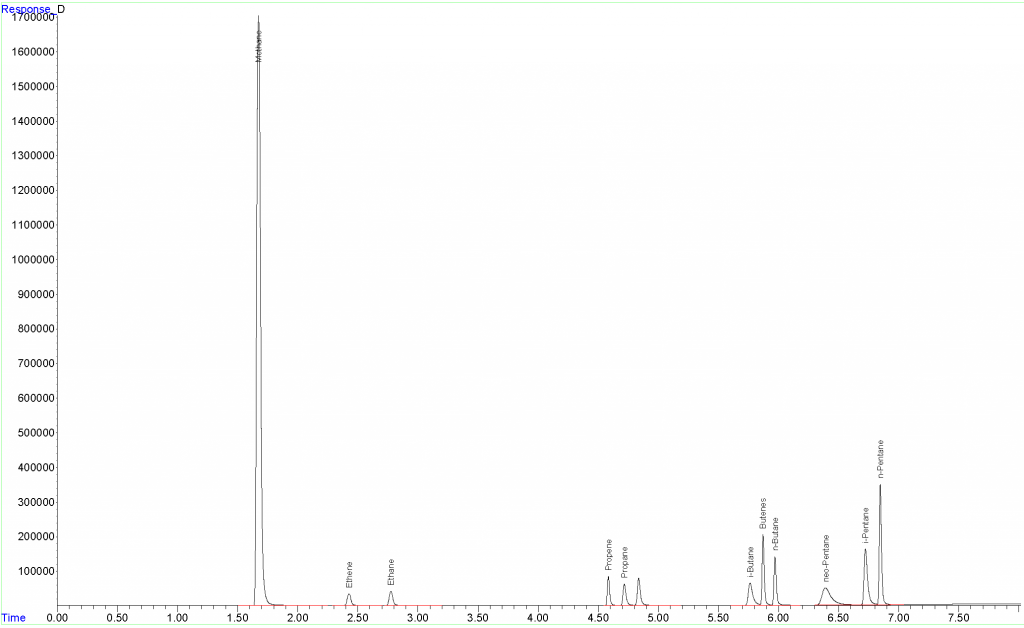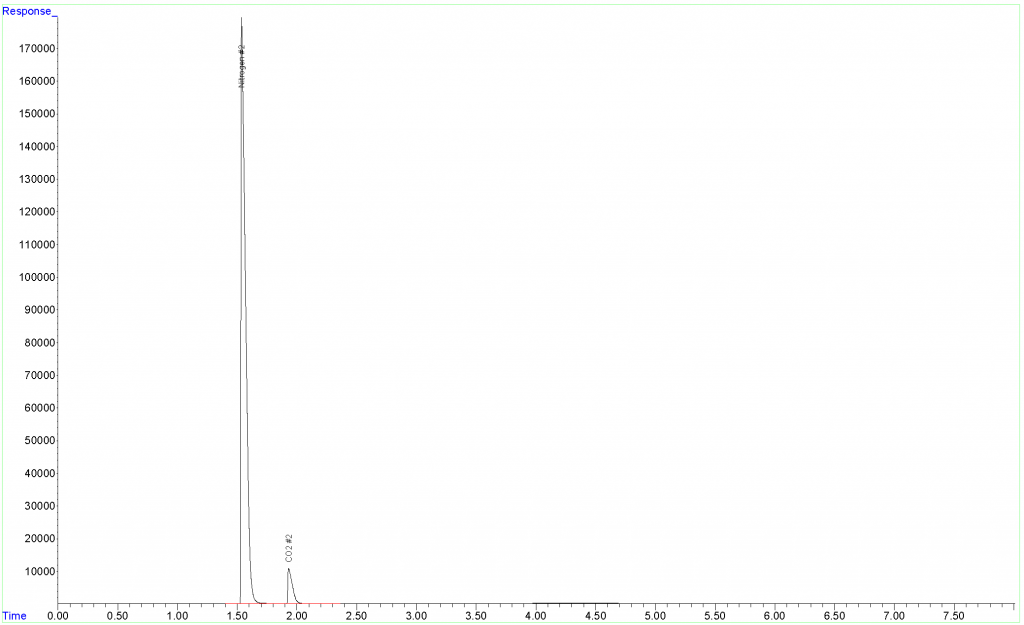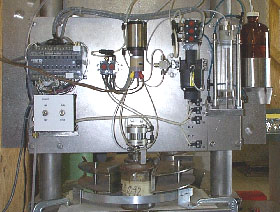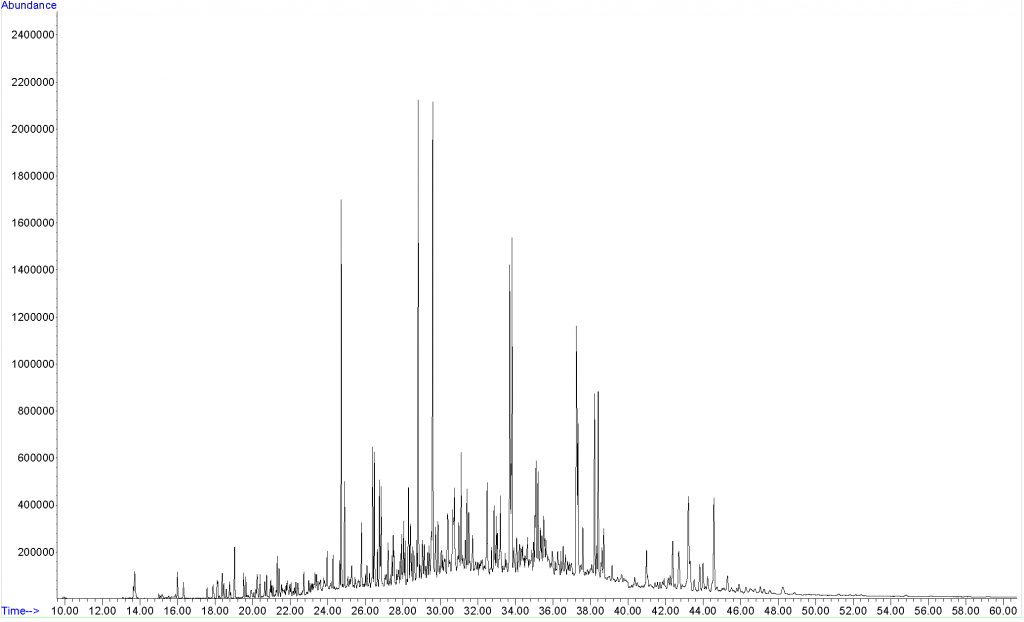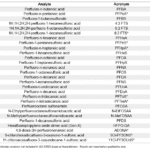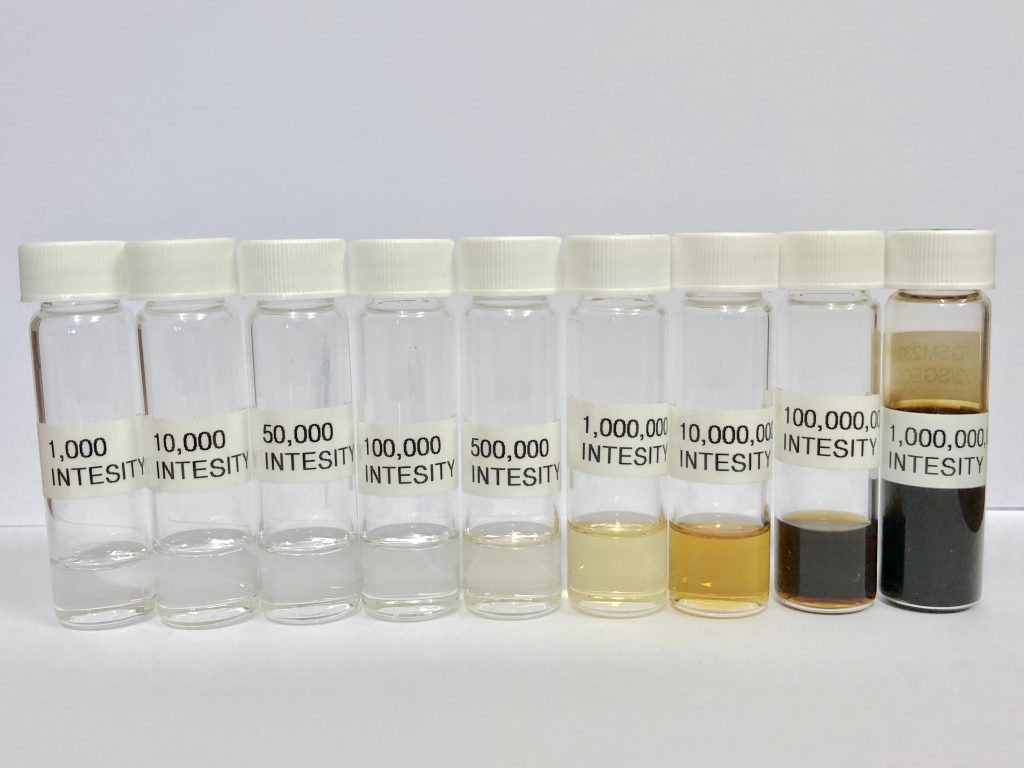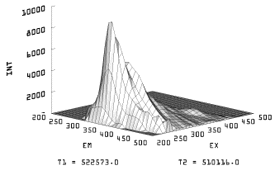Analytical Services
Laboratory Services
B&B Laboratories is an affiliate of TDI-Brooks International which are both owned and operated by world-renowned geochemists Dr. Jim Brooks and Dr. Bernie Bernard in College Station, Texas.
B&B Labs provides high-quality analytical services and scientific interpretation with a focus on petroleum geochemistry, surface geochemical exploration, oil spill response, environmental chemistry, and environmental assessments via our laboratory affiliate, B&B Laboratories.
Questions? Email labinfo@tdi-bi.com
Qualifications
From determining trace contaminants in sediment, soils, tissue, and water to oil spill response, we have extensive experience with programs such as NOAA’s Status and Trends Mussel Watch (1999-currently), United States Fish and Wildlife Analytical Control Facility (2002-currently), and our involvement in oil spill response as with Mississippi Canyon 252 (Deepwater Horizon) Natural Resource Damage Assessment (2010-currently). We have participated in National Institute of Standards and Technology (NIST) laboratory intercalibrations for tissue, sediments and crude oil from 1998 through 2011.
- ISO/IEC 17025:2017– Download Certificate HERE
- ISO 9001:2015 – Download Certificate HERE
Our Geotechnical Laboratory complies with current ASTM Standards.
To view our complete list of analytes under our A2LA Scope of Accreditation for Chemical Testing please click: Touchstone:Accreditation & Assessment Management System – Customer Portal (a2la.org)
View our Laboratory Services Flyer here: Chemistry Laboratory Services 2023
chemical Laboratory
Our company has over 28 years of experience and has been the choice laboratory for programs such as NOAA’s Status and Trends Mussel Watch (1999-currently), United States Fish and Wildlife Analytical Control Facility (2002-currently), oil spill response as with Mississippi Canyon 252 (Deepwater Horizon) Natural Resource Damage Assessment (2010-currently).
Our company has been ISO 9001 accredited since 2011 and is currently in the process of obtaining ISO 17025:2017 accreditations.
We possess a USDA permit for the importing of foreign soils for laboratory analysis.

We take great pride in providing the highest quality trace-level organic chemical analyses for industries that require monitoring of analytes outside the scope and detection limits of typical regulatory methods. Our methods are based on highly modified EPA methods that are performance-based and meet the requirements of ISO 17025:2017. We specialize in the extraction and analysis of organic compounds in soils, sediment, and non-human tissue (i.e. fish, bivalves, bird eggs, blubber).
Experienced scientists review the data to ensure that they are scientifically sound and fulfill our customer’s requirements and requests.
Our Analytical Repertoire includes the following:
% Carbon Determination
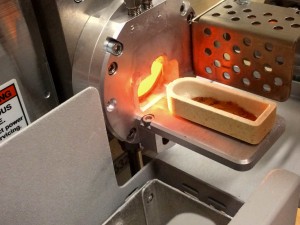 Employing the Lloyd Kahn procedure, we routinely analyze percent total carbon, percent organic carbon and percent inorganic carbon using the LECO corporation model 632 carbon analyzer in sediments and soils using direct combustion/infrared detection. In addition to the determination of solids for percent carbon, we can provide % carbon results for both fresh and marine water samples using the OI Analytical model 700 or 1010 Wet Oxidation Total Organic Carbon Analyzers.
Employing the Lloyd Kahn procedure, we routinely analyze percent total carbon, percent organic carbon and percent inorganic carbon using the LECO corporation model 632 carbon analyzer in sediments and soils using direct combustion/infrared detection. In addition to the determination of solids for percent carbon, we can provide % carbon results for both fresh and marine water samples using the OI Analytical model 700 or 1010 Wet Oxidation Total Organic Carbon Analyzers.
C15+ Hydrocarbon Determination
C15+ Hydrocarbon Determination refers to the determination of individual normal alkane hydrocarbons between 15 and 36 carbons. The determination also includes the isoprenoids pristane and phytane, and a determination of the unresolved complex mixture (UCM). The analytes are separated and detected by a flame ionization detector (GC/FID).
Core sections associated with recent seepage of petroleum may have a complete sequence of n-alkanes, plus the isoprenoids, pristane and phytane. Depending on the degree of biodegradation, a UCM hump may also be present. For severely biodegraded extracts, the n-alkanes and isoprenoids have been degraded and a large UCM hump is usually present.
Sites associated with recent, terrigenous organic matter typically have a low UCM value and an enrichment in long-chain (greater than n-C23) n-alkanes with odd-carbon predominance. The detection of a complete suite of n-alkanes plus pristane and phytane is especially strong evidence of the existence of migrated petroleum.
Brominated Flame Retardants
As part of a new group of emerging contaminates , we also offer the determination of Polybrominated Diphenyl Ether (PBDE) & Polybrominated Biphenyls (PBB). Used as flame retardants, these compounds can be found in many commercial and household items from plastic toys, textiles, building materials and laptops. As a quantitative technique used for the determination of PBDE/PBBs (individual congeners) in extracts of sediment, water, and tissue, PBDE/PBB analysis is performed using gas chromatography / mass spectrometry Negative Chemical Ionization (GC/MS-NCI) and (GC/MS) in selected ion monitoring (SIM) mode at sub part per billion concentrations respectively.
Butyltin Determination
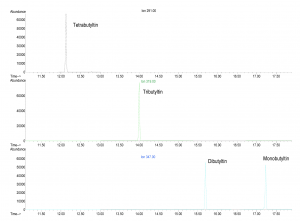 Butyltins are utilized in the industrial production of plastics and as fungicides/bactericides. Organotins in the form of TBT-based paints have largely been used to inhibit the growth of organisms on solid surfaces, such as ships immersed in fresh or salt water. However, as these compounds degrade into the water column, the butyltins are taken up by aquatic organisms, leading to growth abnormalities and increased mortality in certain aquatic organisms. Determination of tetrabutyltin (TeBT), tributyltin (TBT), dibutyltin (DBT) and monobutyltin (MBT) can be used to assess the extent of butyltin contamination in an ecosystem. TDI-Brooks offers the analysis of Butyltins. We routinely analyze sediment, water and tissue matrices as part of NOAA’s monitoring programs around the United States. This analysis involves the extraction, derivitization, and analysis of TeBT and TBT and its degradation products DBT and MBT from soil, tissue, and water matrices and determined using gas chromatography/mass spectrometry (GC/MS) in selected ion monitoring (SIM) mode at sub parts per billion levels.
Butyltins are utilized in the industrial production of plastics and as fungicides/bactericides. Organotins in the form of TBT-based paints have largely been used to inhibit the growth of organisms on solid surfaces, such as ships immersed in fresh or salt water. However, as these compounds degrade into the water column, the butyltins are taken up by aquatic organisms, leading to growth abnormalities and increased mortality in certain aquatic organisms. Determination of tetrabutyltin (TeBT), tributyltin (TBT), dibutyltin (DBT) and monobutyltin (MBT) can be used to assess the extent of butyltin contamination in an ecosystem. TDI-Brooks offers the analysis of Butyltins. We routinely analyze sediment, water and tissue matrices as part of NOAA’s monitoring programs around the United States. This analysis involves the extraction, derivitization, and analysis of TeBT and TBT and its degradation products DBT and MBT from soil, tissue, and water matrices and determined using gas chromatography/mass spectrometry (GC/MS) in selected ion monitoring (SIM) mode at sub parts per billion levels.Gas Isotope Analysis
Scientists at TDI-Brooks International, Inc., who have spent their careers developing methods for determination of trace gases and other organics compositions in nature, have now developed the ability to robustly measure the carbon isotope ratio of each light hydrocarbon component at concentrations less than 1 ppmV. Prior to this new tool, only about one sample in 30 brought from the field had light gas concentrations high enough for determination of individual gas isotope ratios. Now, essentially any sample with light hydrocarbon concentrations above background can yield valid gas isotope ratios.
Instrument detection and quantification of methane and the other light hydrocarbon gases in soils and near-surface marine sediments is perhaps the earliest and long-lived geochemical method used for petroleum prospecting, dating back to the 1930s. Light hydrocarbons can reside in soils and near-surface marine sediments from different sources and in a variety of phases, often together in equilibrium.
Determinations are routinely performed on samples of soils and sediments for concentrations of resident methane, ethene, ethane, propene, propane, iso-butane, n-butane, iso-pentane, n-pentane, and carbon dioxide. Such gas measurements are typically performed around the world as elements of surface geochemical exploration (SGE) programs for the purpose of seep hunting. These molecular compositions can often distinguish biogenic from thermogenic sources in soils, sediments, seeps, gas hydrates, and well gases. However, competing processes including local gas mixing, production, consumption, migration, alteration, and fractionation can render the signature of the original gas source ambiguous. Various gas-source models in the literature have been developed to aid in accurate interpretation for samples that have been biodegraded, fractionated, and/or mixed during and after migration.
Stable carbon isotopic ratios of each of the light hydrocarbons are often used to clarify gas source for samples that have sufficient concentrations of the individual gas components. Such isotopic compositions of thousands of natural gas samples have been reported in the literature or reside in various prospecting databases. Obtaining accurate stable carbon isotope ratios of well gases has become commercially routine, because the individual concentrations of the alkane gases are typically high enough for baseline separation and robust determination by isotope ratio mass spectrometry (IRMS). However, the concentrations of these individual alkanes in soils and sediments range down below one ppmV (µL gas per L soil). These low concentrations are easy to detect using gas chromatography with flame ionization detection (GC/FID), but have been insufficient for reliable measurements of the carbon isotopic ratios of the individual light hydrocarbons. A diagram and photo are presented below.
Method: As much as a liter of gas with traces of light hydrocarbons, such as an atmospheric sample or the equilibrated headspace from a canned soil or sediment sample, is stripped of moisture and adsorbed onto a cryo-trap held at near LN2 temperature. After this cryo-trapping concentration step, the analyte light hydrocarbons are thermally desorbed with helium onto to a PLOT GC column for separation. Each gas component passes in turn through a combustion furnace, quantitatively combusting each eluting light hydrocarbon. The resulting CO2 is then split such that a desired fraction enters the vacuum chamber of the isotope ratio mass spectrometer for ratio measurement against a standard isotope mixture. Accuracy and precision are both better than ± 1o/oo for even low concentrations of gas.
The natural presence in seabed sediments of elevated levels of C2+ alkane gases has historically served as a prospecting indicator of migrating thermally-sourced gas, as conventional wisdom holds that ethane, propane, the butanes and the pentanes are not locally produced and sustained at more than a few ppmV near the seabed. The microbially generated olefins including ethene and propene are ubiquitous in the recent marine environment, and are routinely measured in marine sediments at sub-ppmV concentrations, though these compounds are too labile to persist in thermogenically derived fluids. Our new Purge & CryoTrap/GC/IRMS system now allows us to measure the carbon isotopic compositions of each of the light hydrocarbon gases, including the olefins, in most seabed sediments.
Below is a plot of the interstitial gas compositions from 12-m deep Jumbo piston core (JPC) samples, plotting the carbon isotopic composition of methane vs. that of ethane. The red line indicates the empirical trend line for this gas isotope pair from a worldwide sampling of natural gases. Samples plotting close together on the line indicate a co-genetic source of thermogenic gas. The JPC seep samples are plotted as indicated in the legend. We believe the ethane in these samples to be microbially produced (as is the methane) or even more likely to be the diagenetic daughter product of decomposing and very labile microbially produced ethene. The ethane isotopic ratios reported here were isotopically lighter than -60o/oo vs. VPDB, which is lighter than even the least mature thermogenically-derived ethane considered in the literature.
Without the determination of stable carbon isotope compositions of these ethanes, they would have been interpreted as of thermogenic origin due to their 100+ ppmV concentrations. If a degradation product, this ethane should reflect the original isotopic composition of the bacteriogenic ethene from which it derived, as isotopic fractionation effects should be small with the substantially complete ethene degradation inferred by the measured concentrations of ethene in the cores. Future such work can now include the measurement of isotopic ratios of seabed ethene, for comparison with ethane.
Without the determination of stable carbon isotope compositions of these ethanes, they would have been interpreted as of thermogenic origin due to their 100+ ppmV concentrations. If a degradation product, this ethane should reflect the original isotopic composition of the bacteriogenic ethene from which it derived, as isotopic fractionation effects should be small with the substantially complete ethene degradation inferred by the measured concentrations of ethene in the cores. Future such work can now include the measurement of isotopic ratios of seabed ethene, for comparison with ethane.
Below is a plot of the interstitial gas compositions from several recently acquired 5-m deep piston core samples, plotting the carbon isotopic composition of propane vs. that of ethane. The red line indicates the world-wide empirical trend line for this gas isotope pair. The piston core interstitial gas samples are plotted as red triangles, some overlain with yellow squares. These are among the few such sets of data ever generated due to the low, sub-5 ppmV concentrations of these gases in the seabed sediments. We believe the ethane and propane in samples marked as red triangles to be microbially produced or even more likely to be the diagenetic daughter products of decomposing and very labile microbially produced olefins. The ethane and propane in samples marked with yellow squares, however, may be of thermogenic origin, but we also are finding some low-concentration thermogenic propanes that appear to be fractionated isotopically heavier, perhaps by propane-preferential microbial activities.
TDI-Brooks acquires on our SGE projects, and receives from other field acquisition programs, more than 1,000 seabed piston cores each year that are intended for geochemical analyses in the context of surface geochemical prospecting for oil and gas. We are the world-wide analytical lab of choice for lab analysis and interpretation because we have established ourselves over the decades as having an extremely robust set and demonstrably in-control set of analytical methods for this purpose. In the process, we have also developed an incomparable database of surface geochemical exploration data with which to compare new survey results. Starting early 2015 with our new Purge & CryoTrap/GC/IRMS system, we have started adding to our database these new stable carbon isotope measurements of each of the light hydrocarbon gases at concentrations too low for any other lab to match. Such results are already starting to shift our interpretative paradigm for distinguishing microbial from thermogenically sourced gases in marine sediments.
Hydrocarbon Determination
TPH Determination (n-C10 –n-C40) In conjunction with our PAH determination, we offer the analysis of Saturate Hydrocarbons with n-alkanes ranging from n-C10 through n-C40 as well as several Isoprenoids in identifying petroleum contamination in environmental samples and/or characterization of petroleum products. Also available is the analysis of samples for Total Petroleum Hydrocarbon (TPH). Aliphatic Hydrocarbon (ALI) determination is a quantitative technique used for the analysis of normal alkanes with 10 to 40 carbons (C10 to C40), and the isoprenoids pristane and phytane, in extracts of sediment and water. This technique is very sensitive for “fingerprinting” petroleum and for following its degradation in the environment. Quantitation is performed by high-resolution capillary gas chromatography with flame ionization detection (GC/FID). Method detection limits for compounds determined using this method are very low (< 0.02 mg/dry g for sediment, and < 0.32 mg/L for water). Total Petroleum Hydrocarbon (TPH) determination refers to the quantitative determination of the sum of all hydrocarbons, degraded and non-degraded, that may be extracted from a sediment or water sample. The analysis is performed gravimetrically or by gas chromatography / flame ionization detection (GC/FID). The gravimetric technique is an inexpensive and quick screening tool for oil spill response projects. The gravimetric TPH method is performed by solvent extracting hydrocarbons from a sample, concentrating the extract by reducing the extract volume, and weighing a portion of the extract. The more expensive GC technique provides additional sensitivity and information. This method takes a portion of the concentrated extract (as above) and injects it into a GC/FID. The resulting chromatogram is integrated, using a straight line, between the retention time for the n-alkane n-C10 and the retention time for the n-alkane n-C40. This integration includes most extractable petroleum related hydrocarbons. Using this method, the Total Resolvable Hydrocarbons (TRH) and the Unresolved Complex Mixture (UCM) may also be determined. The TRH are non-degraded hydrocarbons which appear as peaks in the chromatogram. The UCM is the area under the chromatogram (excluding the peaks) representing degraded hydrocarbons. As an oil degrades, the UCM hump becomes larger and the TRH decreases. TPH is the sum of TRH and UCM.
Hydrocarbon Extraction
An automated extraction apparatus (Dionex ASE200 Accelerated Solvent Extractor) is used to extract various organic hydrocarbons from pre-dried sediment. The extractions are performed using hexane inside stainless-steel extraction cells held at elevated temperature and solvent pressure. This method of extraction minimizes the use of solvent and decreases the extraction time when compared to conventional Soxhlet extractions. The extracts dissolved in the hot solvent are transferred from the heated extraction cells to glass collection vials. Pre-cleaned, activated copper is added to each collection vial in order to minimize matrix interference.
Extracts are concentrated to a final volume of 8-ml using an evaporative solvent reduction apparatus (Zymark TurboVap II). Final extracts are submitted for hydrocarbon analysis by Total Scanning Fluorescence (TSF) and Gas Chromatography Flame Ionization Detection (GC/FID). Equipment is demonstrated to be interference-free with the analysis of method blanks. Oil spikes (extractions of a known amount of diluted crude oil) are analyzed with every sample-set in order to demonstrate the reproducibility of the extraction procedure
Interstitial Headspace Gas Determination
Interstitial Headspace Gas Determination refers to the determination of interstitial light hydrocarbon gases including methane, ethene, ethane, propene, propane, butenes, iso-butane, n-butane, neo-pentane, iso-pentane, and n-pentane (C1-C5) by Gas Chromatography/Flame Ionization Detection (GC/FID). The natural presence of high levels of C2+ alkane gases serves as a good indicator of migrating thermally-sourced gas, because ethane, propane, the butanes, and the pentanes are not microbially produced at high levels in marine sediments. The light hydrocarbon gases are not very soluble in water, so they can be extracted from a sediment and water sample into a gas such as nitrogen by a partitioning procedure. Sediment samples are canned immediately after piston core retrieval for headspace gas determinations. Sediment sections are immediately extruded from the core barrel’s liner into cans containing hydrocarbon-free 5 % Sodium Chloride solution. The cans are sealed after flushing the headspace with purified nitrogen, then frozen.
The computer software automatically integrates analyte peaks based on their retention times and analysts visually confirm that each analyte peak is integrated correctly by the software.
Laboratory Partnerships
Not all laboratories can offer the services you require. We can facilitate extended services by partnering with other labs in order to provide you with a sole source solution to your analytical needs. Please contact us for more information..
Other Analyses
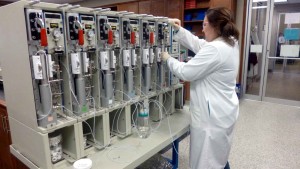 We have a highly trained staff with a broad range of experience in environmental analytical techniques. If you require services not listed here, please contact us for more information
We have a highly trained staff with a broad range of experience in environmental analytical techniques. If you require services not listed here, please contact us for more information
Polycyclic Aromatic Hydrocarbons
As part of our hydrocarbon forensics, we routinely determine an extensive list of parent PAH and alkyl-substituted homologs in sediment, water, and tissue. PAH analysis is performed using gas chromatography / mass spectrometry (GC/MS) in selected ion monitoring (SIM) mode. Method detection limits for PAHs using this method are extremely low (< 0.5 ng/dry g for sediment, < 10 ng/L for water, and < 10 ng/wet g for tissue).
Poly- and Perfluoroalkyl Substances (PFAS)
Poly- and perfluoroalkyl substances, also known as PFAS compounds, are found in numerous components, most notably in non-stick and waterproof items that are used in everyday life, including Teflon. Even items like the inside of microwave popcorn bags, fast food wrappers, and aqueous fire-fighting foams (AFFF) contain PFAS compounds. While these compounds are not acutely toxic, PFAS are known to be bioaccumulative, i.e. they collect in organ tissue over time and are potentially carcinogenic and contribute to other health issues. Because of the pervasiveness and stability of PFAS, these compounds are being detected in many areas of the environment, including water, sediment/soil, and in the tissues and organs of marine and terrestrial wildlife.
B&B Laboratories Receives ISO 17025 Accreditation for PFAS Testing
In the Fall of 2020, B&B Laboratories earned ISO 17025 accreditation for poly- and perfluoroalkyl substances (PFAS) analyses in water, soil/sediment, and tissue samples. These novel analyses are some of the company’s first to employ liquid chromatography/triple quadrupole mass spectrometry, or LC/MS/MS. PFAS are highly durable compounds, giving them the moniker “forever compounds”, and as a result are being detected in many areas of the environment including water, soil/sediment, and in the tissues and organs of marine and terrestrial wildlife. This challenging and ever-evolving class of environmental contaminants are pervasive and, while not acutely toxic, are known to bioaccumulate in organ tissues and contribute to health issues.
PFAS are found in numerous everyday items from non-stick or waterproof objects to some fast-food wrappers and stain resistant clothing. Environmental scientists are becoming more aware of the pervasiveness and diversity of these compounds and are working on ways to decrease or eliminate PFAS in the environment. B&B’s methods are optimized to detect a select group of 28 PFAS compounds (see table) to parts-per-trillion levels in all three matrices.
For more information, summary posters are available below for water samples and soil/sediment/tissue samples:
- Poly- and Perfluoroalkyl Substances (PFAS) in Water Samples by Liquid Chromatography/Tandem Mass Spectrometry, Megan M. Konarik, M.S, Michael Gaskins, Dr. Bernie Bernard, Dr. James Brooks
- Poly- and Perfluoroalkyl Substances (PFAS) in Soil/Sediment and Tissue Samples by Liquid Chromatography/Tandem Mass Spectrometry, Megan M. Konarik, M.S, Michael Gaskins, Dr. Bernie Bernard, Dr. James Brooks
PCB & Chlorinated Pesticides Determination
As part of our long standing involvement with NOAA and USFWS, TDI-Brooks routinely analyze an extensive congener specific list of PCBs and Chlorinated Pesticides from Chlordanes, DDTs, and isomers of Hexachlorohexanes to name a few. High quality Chlorinated Pesticide and Polychlorinated biphenyl (PCB) dtermination is performed using high resolution gas chromatography / electron capture detection (GC/ECD) and is a quantitative analytical technique used for the determination of chlorinated hydrocarbons in extracts of tissue, water, and sediment. Method Detection Limits using this technique are very low (< 0.2 ng/dry g for sediment, <5 ng/L for water, and <4 ng/wet g for tissue).
Sample Receiving
Sample Receiving Hours: Monday – Friday: 7 am – 6 pm
Closed Holidays
New Year’s Day, Memorial Day, Independence Day, Thanksgiving Day, and Christmas Day.
Please contact us at 979-693-3446 to make arrangements for sample delivery outside of normal business hours.
Mrs. Amanda Brewster, Laboratory Client Account Manager (amandabrewster@tdi-bi.com)
Mr. Jake Wiersig, Sample Custodian (jakewiersig@tdi-bi.com)
TDI-Brooks International
14391B S. Dowling Rd College Station, TX 77845
Total Scanning Fluorescence
Total Scanning Fluorescence (TSF) is a semi-quantitative analytical technique that is selectively sensitive to aromatic compounds and, as such, is a valuable tool for detecting the presence of petroleum related hydrocarbons in sediment extracts. Increasing TSF intensity (expressed in arbitrary intensity units) generally corresponds to increasing aromatic hydrocarbon concentrations in sediment extracts.
 Sediments containing upward-migrated oil contain a higher concentration of larger aromatic compounds (3 or more benzene rings) and fluoresce at longer wavelengths, whereas sediment extracts containing upward-migrated gas or condensate fluoresce at shorter wavelengths. TSF patterns are typically insensitive to bacterial alteration except in severely biodegraded samples.
Sediments containing upward-migrated oil contain a higher concentration of larger aromatic compounds (3 or more benzene rings) and fluoresce at longer wavelengths, whereas sediment extracts containing upward-migrated gas or condensate fluoresce at shorter wavelengths. TSF patterns are typically insensitive to bacterial alteration except in severely biodegraded samples.
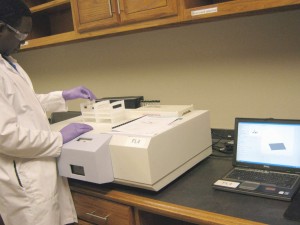 The TSF parameter R1 gives an estimate of the ratio of three and four-ring aromatics to two-ring aromatics. For extracts with high TSF maximum intensity, R1 values greater than 2 typically indicate the presence of mature hydrocarbons.A three-dimensional spectrum is acquired using software written for Perkin-Elmer Model LS 50B Fluorometers. A sample extract is placed in the pre-calibrated fluorometer, and scanned over a specified range of excitation wavelengths while measuring the resulting fluorescence emission intensities over a specified range of emission wavelengths. The resulting data is used to evaluate the sample extract for the presence of petroleum related aromatic hydrocarbons.
The TSF parameter R1 gives an estimate of the ratio of three and four-ring aromatics to two-ring aromatics. For extracts with high TSF maximum intensity, R1 values greater than 2 typically indicate the presence of mature hydrocarbons.A three-dimensional spectrum is acquired using software written for Perkin-Elmer Model LS 50B Fluorometers. A sample extract is placed in the pre-calibrated fluorometer, and scanned over a specified range of excitation wavelengths while measuring the resulting fluorescence emission intensities over a specified range of emission wavelengths. The resulting data is used to evaluate the sample extract for the presence of petroleum related aromatic hydrocarbons.
If you would like to learn more about our analytical services and capabilities, please contact:
Click here for B&B Laboratories Request for quote (RFQ) form
Geotechnical Laboratory
TDI-Brooks International, Inc. offers a comprehensive suite of geotechnical analytical services for characterizing offshore geotechnical samples. In addition to our offshore geotechnical sampling toolkit, TDI-Brooks can provide soil testing services through our in-house geotechnical laboratory.
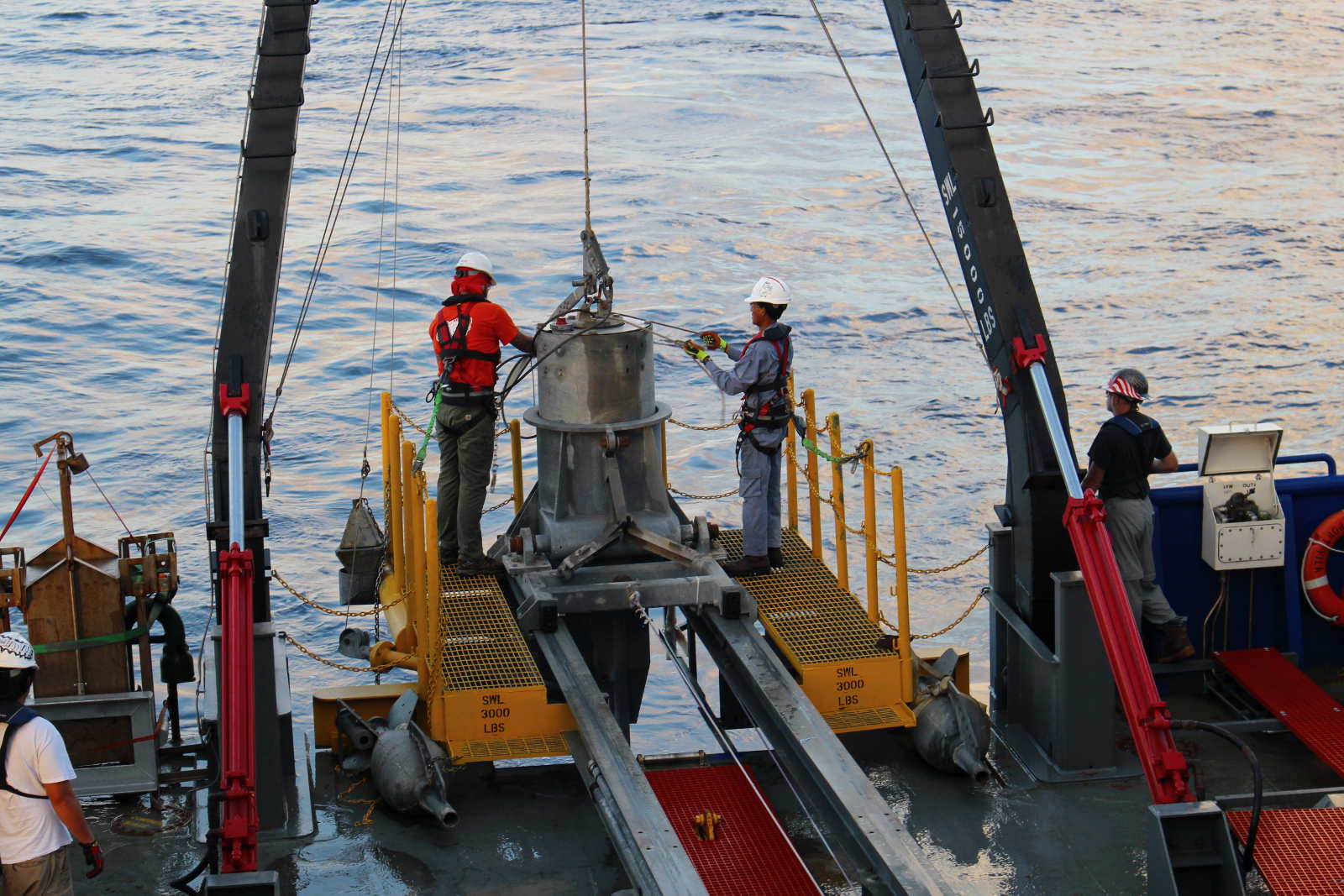
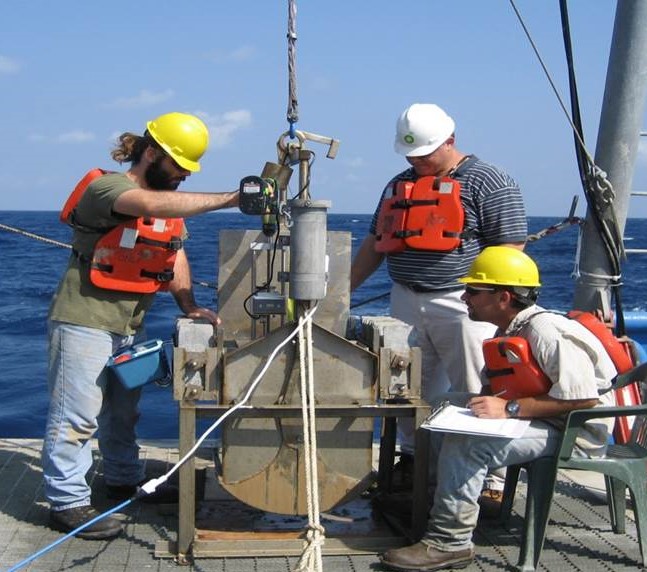


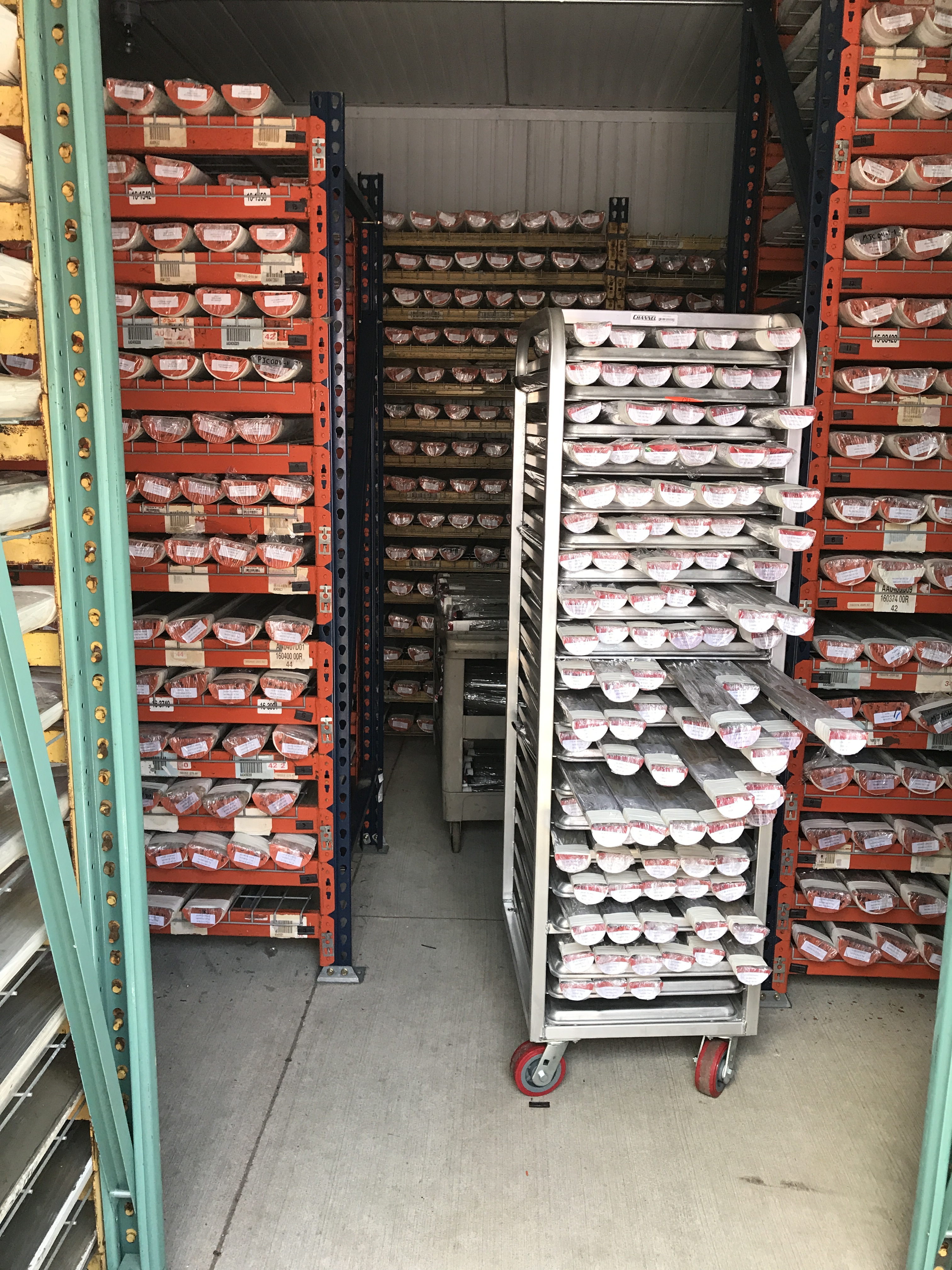
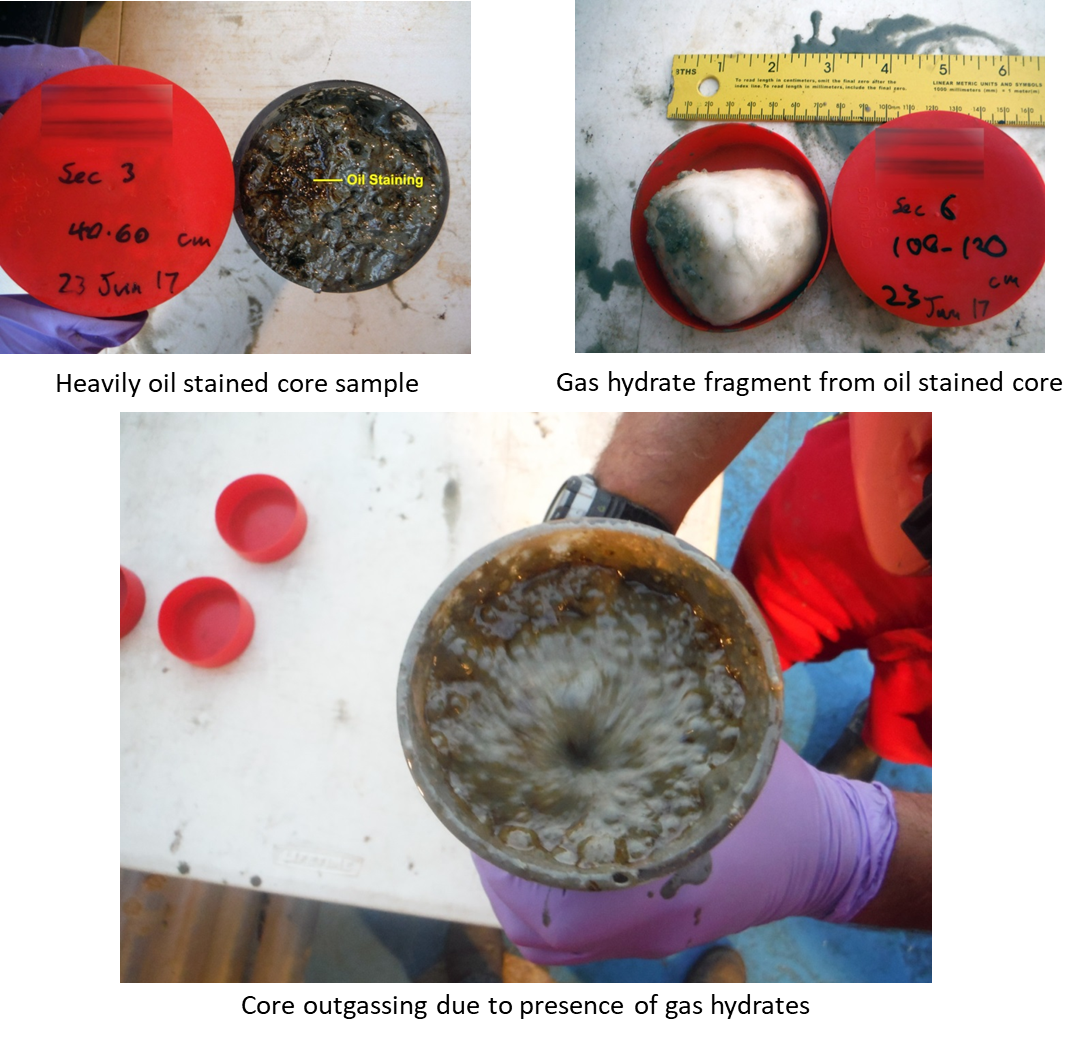
Our Geotechnical Laboratory test soils when the engineering properties of soil or rock influence the design of major structures .
Our laboratory routinely performs the following geotechnical testing:
Atterberg Limits (Plastic Limit, Liquid Limit, and Plasticity Index)
The Atterberg limits are a set of “limits of consistency” of fine-grained soils. In current engineering usage, they are comprised of the plastic limit and the liquid limit. Occasionally, the shrinkage limit is included with the plastic and liquid limits. In most TDI-Brooks projects, the plastic and liquid limits are sufficient for soil characterization. The liquid limit is the water content of a soil at the arbitrarily defined boundary between the semi-liquid and plastic states. The plastic limit is the water content of a soil at the boundary between the plastic and semi-solid states. The plasticity index is the range of water content over which a soil behaves plastically. Numerically, it is the difference between the liquid limit and the plastic limit. Reference ASTM D4318.
Calcium Carbonate Content
The carbonate content (calcite equivalent) of soil is determined by treating a dried soil specimen with hydrochloric acid in a reactor. Carbon dioxide gas is evolved during the reaction between the acid and carbonate fraction of the specimen. The resulting pressure generated in the closed reactor is proportional to the calcite equivalent of the specimen. This pressure is measured with a suitable pressure gauge that is pre-calibrated with reagent grade calcium carbonate. Reference ASTM D4373. 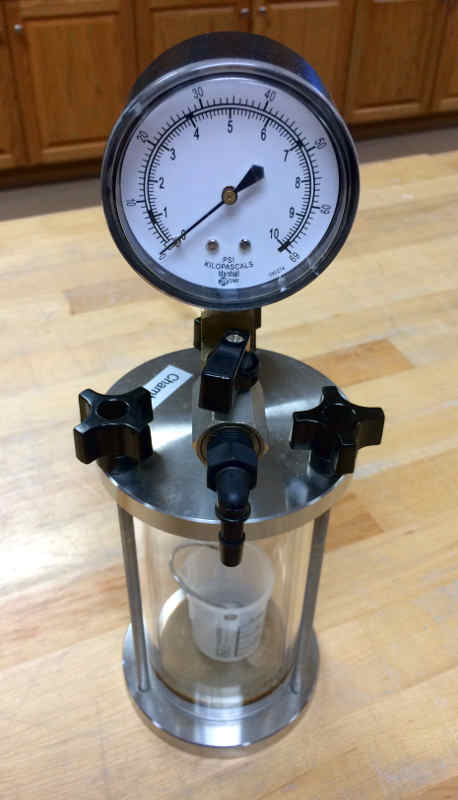
Core Splitting
Core splitting is our process of cutting a core section down the long axis and separating the two halves. This exposes a vertical cross section of a core, allowing the examination of sediment layers and geologic features. Often, this allows identification of layers for age dating. This is available for fine-grained sediments with high and medium moisture contents. We do not currently offer services for splitting hard/rock samples. Split core usually receive High Resolution Photography.

Electrical Resistivity
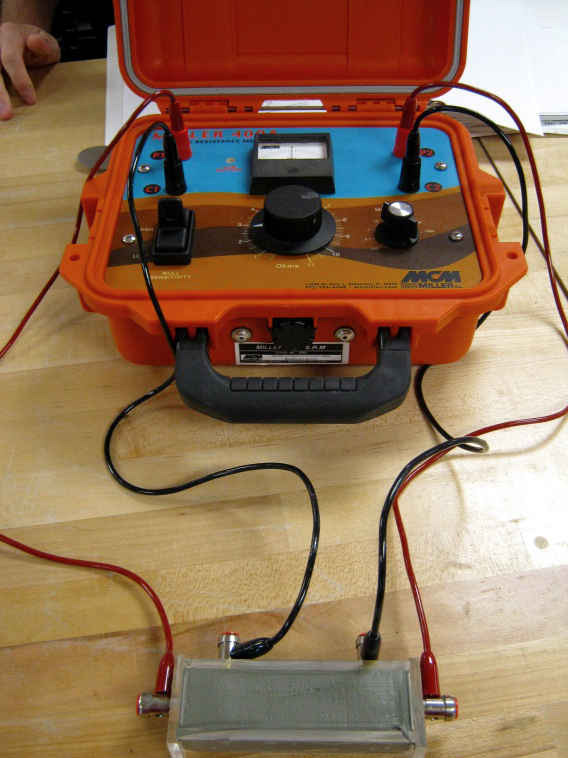 Measurement of sediment electrical resistivity is used for the control of corrosion of buried structures. Electrical resistivity is used both for the estimation of expected corrosion rates and for the design of cathodic protection systems. Resistivity measurements indicate the relative ability of a medium to carry electrical currents. When a metallic structure is immersed in a conductive medium, the ability of the medium to carry current will influence the magnitude of galvanic currents and cathodic protection currents. A soil box with 4 electrodes is used in the lab to conduct this test. Reference ASTM G57.
Measurement of sediment electrical resistivity is used for the control of corrosion of buried structures. Electrical resistivity is used both for the estimation of expected corrosion rates and for the design of cathodic protection systems. Resistivity measurements indicate the relative ability of a medium to carry electrical currents. When a metallic structure is immersed in a conductive medium, the ability of the medium to carry current will influence the magnitude of galvanic currents and cathodic protection currents. A soil box with 4 electrodes is used in the lab to conduct this test. Reference ASTM G57.
Grain Size – Hydrometer
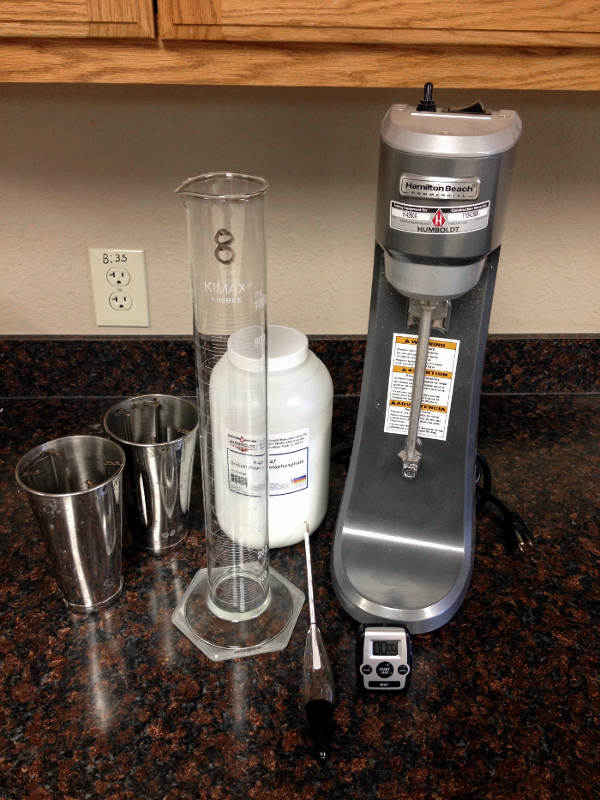 Sediment grain sizes smaller than particles 75 microns can be determined using a sedimentation process. This test is appropriate for marine silts and clays. The particles are initially suspended in solution and then allowed to deposit over time. As they deposit, the density of the solution decreases. The changes in solution density are measured using a hydrometer. The rate at which the particles settle out of suspension can be interpreted to provide grain size distribution, represented by a gradation curve. The gradation curve may also include sieve data generated from the same sample. Reference ASTM D422.
Sediment grain sizes smaller than particles 75 microns can be determined using a sedimentation process. This test is appropriate for marine silts and clays. The particles are initially suspended in solution and then allowed to deposit over time. As they deposit, the density of the solution decreases. The changes in solution density are measured using a hydrometer. The rate at which the particles settle out of suspension can be interpreted to provide grain size distribution, represented by a gradation curve. The gradation curve may also include sieve data generated from the same sample. Reference ASTM D422.
Grain Size – Sieve
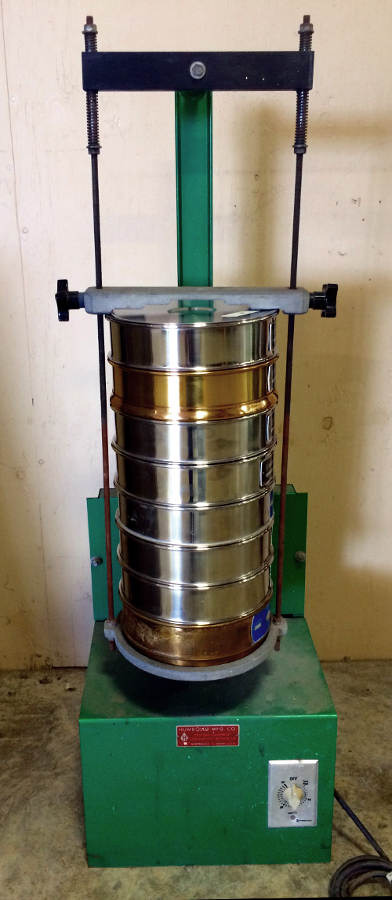 Sediment grain sizes larger than 75 microns can be determined by sieving. A standard sieve set corresponds to specifications in ASTM D422, however, other sieve sizes can be used upon request. The mass of sediment retained on each sieve provides grain size distribution and is plotted on a gradation curve. The gradation curve may also include hydrometer data from the same sample. Reference ASTM D422.
Sediment grain sizes larger than 75 microns can be determined by sieving. A standard sieve set corresponds to specifications in ASTM D422, however, other sieve sizes can be used upon request. The mass of sediment retained on each sieve provides grain size distribution and is plotted on a gradation curve. The gradation curve may also include hydrometer data from the same sample. Reference ASTM D422.
High Resolution Photography
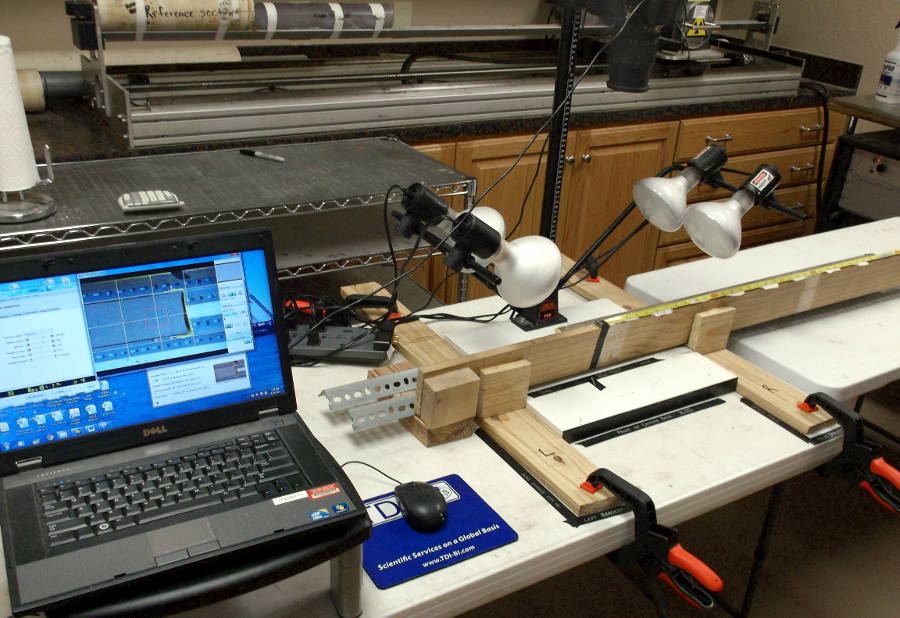 High resolution photography is mostly used in conjunction with Core Splitting. We photograph 10-cm length portions of a core section with a Nikon D90 and merge the photos to generate a single image. These images are typically used by the client for observing geologic characteristics and sedimentology. We can photograph other samples in a high resolution format, but Standard Resolution Photography is also available for documentation and description purposes.
High resolution photography is mostly used in conjunction with Core Splitting. We photograph 10-cm length portions of a core section with a Nikon D90 and merge the photos to generate a single image. These images are typically used by the client for observing geologic characteristics and sedimentology. We can photograph other samples in a high resolution format, but Standard Resolution Photography is also available for documentation and description purposes.
Magnetic Susceptibility
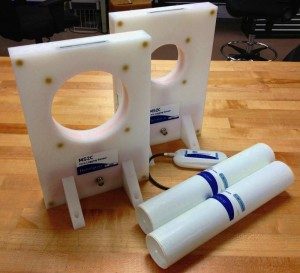 Magnetic susceptibility is a measure of the magnetic behavior of a sediment sample. Magnetic susceptibility measurements provide important information about the composition and properties of materials. In many cases, magnetic susceptibility is done with a multi-sensor core logger. TDI-Brooks can offer this testing separately. Reference Bartington Instruments MS3 Operations Manual.
Magnetic susceptibility is a measure of the magnetic behavior of a sediment sample. Magnetic susceptibility measurements provide important information about the composition and properties of materials. In many cases, magnetic susceptibility is done with a multi-sensor core logger. TDI-Brooks can offer this testing separately. Reference Bartington Instruments MS3 Operations Manual.
Miniature Vane Shear
 Miniature vane shear testing is performed to determine shear strength in very soft to stiff saturated fine-grained clayey sediments. We use a set of 4 calibrated torsion spring sets combined with a motorized vane shear device to determine strength. Reference ASTM D4648.
Miniature vane shear testing is performed to determine shear strength in very soft to stiff saturated fine-grained clayey sediments. We use a set of 4 calibrated torsion spring sets combined with a motorized vane shear device to determine strength. Reference ASTM D4648.
Miniture Vane Spring Calibration
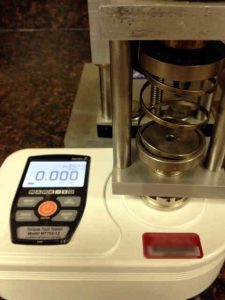 Torsion springs are a critical part for operating miniature vane shear test apparatus. Typically, these springs are used as a set of 4 springs. At TDI-Brooks International, Inc., we offer high-quality calibration for individual torsion springs and complete torsion spring sets for miniature vane systems. By using a calibrated digital torquemeter, our method exceeds the accuracy required by the ASTM D4648 Standard.
Torsion springs are a critical part for operating miniature vane shear test apparatus. Typically, these springs are used as a set of 4 springs. At TDI-Brooks International, Inc., we offer high-quality calibration for individual torsion springs and complete torsion spring sets for miniature vane systems. By using a calibrated digital torquemeter, our method exceeds the accuracy required by the ASTM D4648 Standard.
Moisture Content
Moisture content is a test to determine how much water is in a sediment sample. It is a ratio of the mass of water to the mass of solids, reported in a percent. Since it is a ratio of water to solids, it can, and often does, exceed 100% in marine samples. Reference ASTM D2216.
Multi-Sensor Core Logging (MSCL)
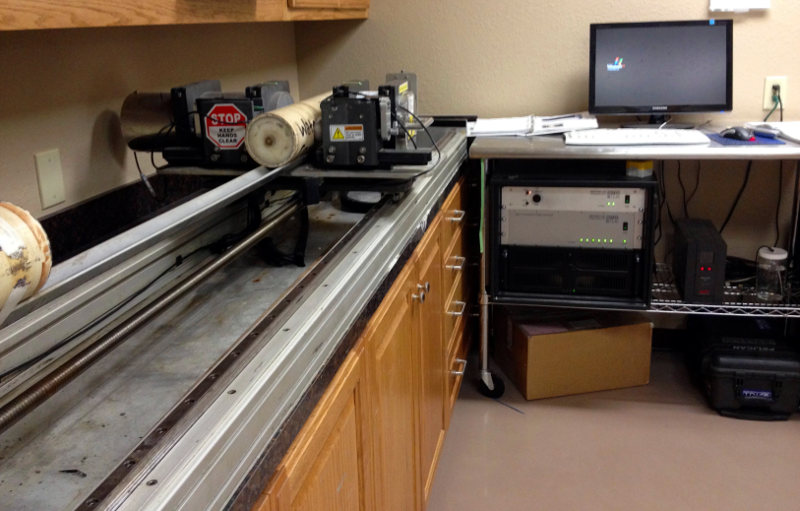 Multi-sensor core logging is a quantitative method to determine geotechnical properties such as bulk density, porosity, void ratios, and water content in sediment cores using a GEOTEK multi-sensor core logger (MSCL). The MSCL can handle core sections up to 1.5-m long and can sample at intervals of 1-mm or greater and is a non-destructive test.
Multi-sensor core logging is a quantitative method to determine geotechnical properties such as bulk density, porosity, void ratios, and water content in sediment cores using a GEOTEK multi-sensor core logger (MSCL). The MSCL can handle core sections up to 1.5-m long and can sample at intervals of 1-mm or greater and is a non-destructive test.
Percent Sand Determination
Percent sand determination is similar to grain size testing using sieves except that the number of sieves is reduced. A No. 4 sieve is used to separate gravel from the sample. A No. 200 sieve allows all the clay and silt to pass, leaving only the sand fraction in the No. 200 sieve.
pH of Soils
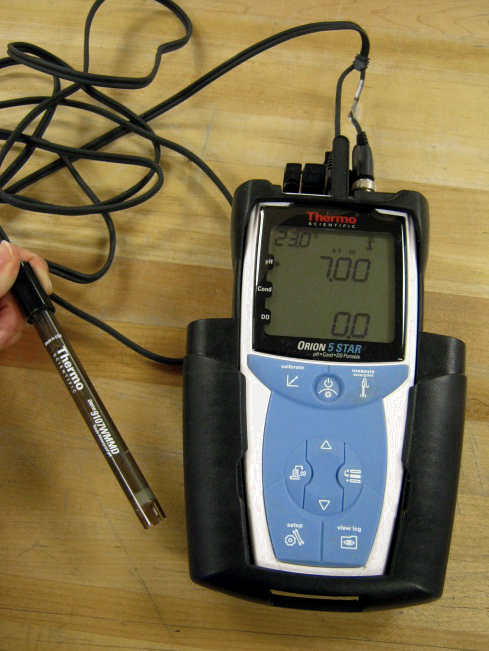 This specific pH of soils test is for uses other than corrosion testing. The test determines the degree of acidity or alkalinity in soil materials suspended in water and a 0.01 M calcium chloride solution. Measurements in both liquids are necessary to fully define the soil’s pH. The measurement of the pH of soils suspended in either water or calcium chloride solution is made with a potentiometer using a pH sensitive electrode system. The potentiometer is calibrated with buffer solutions of known pH. Reference ASTM D4972.
This specific pH of soils test is for uses other than corrosion testing. The test determines the degree of acidity or alkalinity in soil materials suspended in water and a 0.01 M calcium chloride solution. Measurements in both liquids are necessary to fully define the soil’s pH. The measurement of the pH of soils suspended in either water or calcium chloride solution is made with a potentiometer using a pH sensitive electrode system. The potentiometer is calibrated with buffer solutions of known pH. Reference ASTM D4972.
Pocket Penetrometer
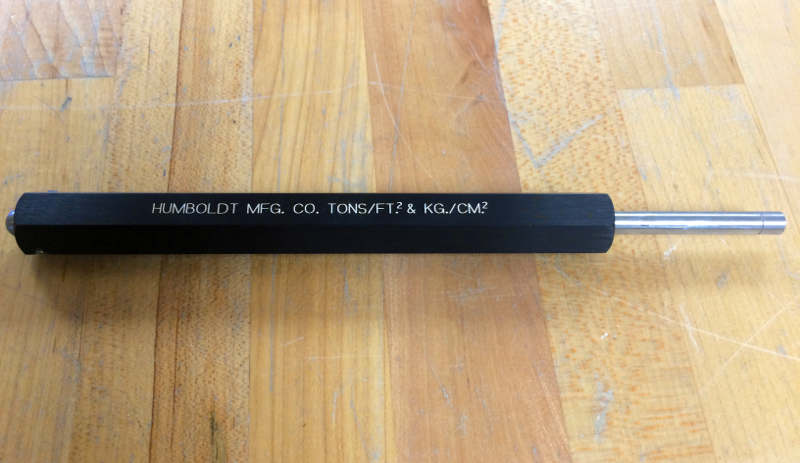 The pocket penetrometer is used to find preliminary soil strength values and is used for classification of cohesive soils. It indicates consistency, shear strength, and approximate unconfined shear strength. The direct-reading scale is in tons per square foot or kilograms per square centimeter. This is typically used for stiffer soils. As a classification tool, it should not replace laboratory testing or field analysis, or be used to produce design data.
The pocket penetrometer is used to find preliminary soil strength values and is used for classification of cohesive soils. It indicates consistency, shear strength, and approximate unconfined shear strength. The direct-reading scale is in tons per square foot or kilograms per square centimeter. This is typically used for stiffer soils. As a classification tool, it should not replace laboratory testing or field analysis, or be used to produce design data.
Qualitative Physical Description (Munsell Color Description, Soil Type, Foram Content, Water Content, Cohesion)
The qualitative physical description gives a wide array of descriptive information for classification of soils. Color is described with color codes from a Munsell color chart. Soil type is a grain size description characterized as clay, silt, sand, or gravel or a combination of those terms. Foram content, water content, and cohesion are all described relatively with terms such as low, moderate, or high.
Remolded Miniature Vane Shear
Remolded miniature vane shear testing is performed to determine shear strength in very soft to stiff saturated fine-grained clayey sediments. We use a set of 4 calibrated torsion spring sets combined with a motorized vane shear device to determine strength. The procedure is the same as Miniature Vane Shear except the sample is remolded first, breaking down any existing sediment structure. Reference ASTM D4648.
Specific Gravity
Specific gravity is the ratio of the mass of unit volume of soil at a stated temperature to the mass of the same volume of gas-free distilled water at a stated temperature. The specific gravity of a soil is determined by placing a certain mass of dry soil into a calibrated pycnometer and then filling the pycnometer with de-aired, distilled water under vacuum. Knowing the mass of the soil and the mass of de-aired water, the specific gravity of the soil solids can be determined. Reference ASTM D854.
Standard Resolution Photography
Standard resolution photography is used to capture visual representation of sediment characteristics. This type of photography can be used in conjunction with Qualitative Physical Descriptions (link) to gain a more complete understanding of sediment characteristics. It can also be used to document unique occurrences that cannot be adequately communicated with a written description. Photographs of this type are usually taken of a horizontal cross section of a core section.
Thixotropy
Thixotropy of soils describes when a remolded soil sample hardens over time while maintaining constant water content and constant volume. The gaining in strength is due to gradual reorientation of molecules and a regaining of the chemical equilibrium. This property is dependent on physical and chemical characteristics of the soil being tested and is performed over a 30-day period.
Torvane Shear
 The torvane is used to find preliminary soil strength values and is used for classification of cohesive soils. This is typically used for softer soils and has adapters allowing it to accommodate a larger range of strengths. As a tool for preliminary testing, it should not replace a more precise strength measurement tool or be used to produce design data.
The torvane is used to find preliminary soil strength values and is used for classification of cohesive soils. This is typically used for softer soils and has adapters allowing it to accommodate a larger range of strengths. As a tool for preliminary testing, it should not replace a more precise strength measurement tool or be used to produce design data.
Unconsolidated-Undrained Triaxial (UU Triaxial)
UU Triaxial testing is performed to determine the shear strength of an undrained and unconsolidated cylindrical sediment sample. Specifically, the sample is placed under a confining pressure to simulate the condition of being confined by surrounding soil. The sample is then failed axially while measuring the force applied to the sample and the deformation. Measuring these two values allows us to construct a stress-strain plot of the failure. Reference ASTM D2850.
Unit Weight (Density)
Unit weight is a ratio of weight to volume. We can also report the density which the ratio of mass to volume. The difference between the two values is only the acceleration due to gravity so one can be determined from the other. We use 2 different methods depending on the grain size. Unit weight and density testing is dependent on the specific soil structure and moisture content at the time of testing. Reference ASTM D7263.
If you would like to learn more about our geotechnical laboratory services and capabilities, please contact: info@tdi-bi.com
Contact Us
TDI-Brooks
14391 S Dowling RD
College Station, TX 77845
Email: info@tdi-bi.com
Phone: +1 (979) 693-3446
Quick Links

Sitemap
-
- Home
- About
- Field Acquisition Services
- Vessels & Charters
- Analytical Services
- Available Piston Core and Heatflow Program Data
- Locate Us
- Contact Us
- Resources & Resumes
- Careers


